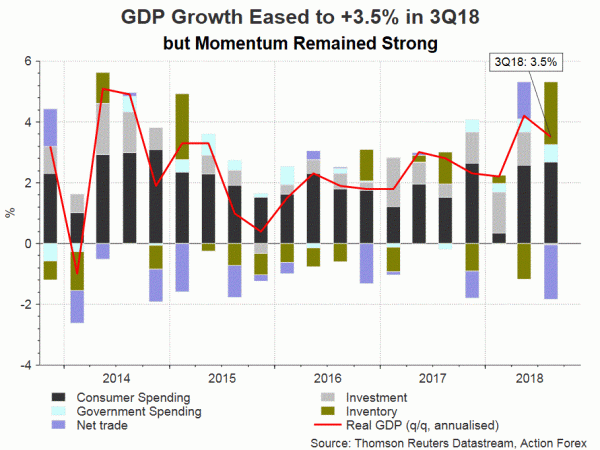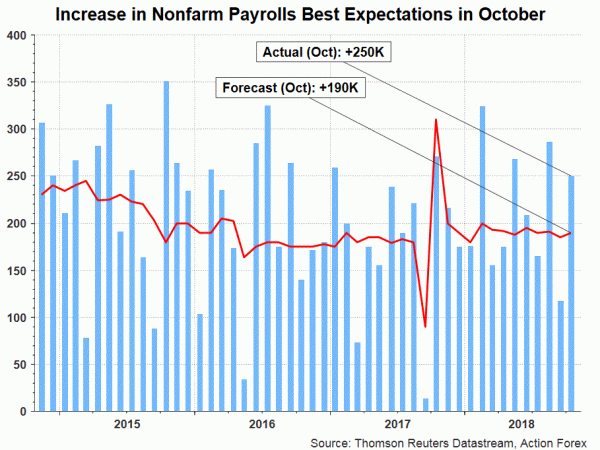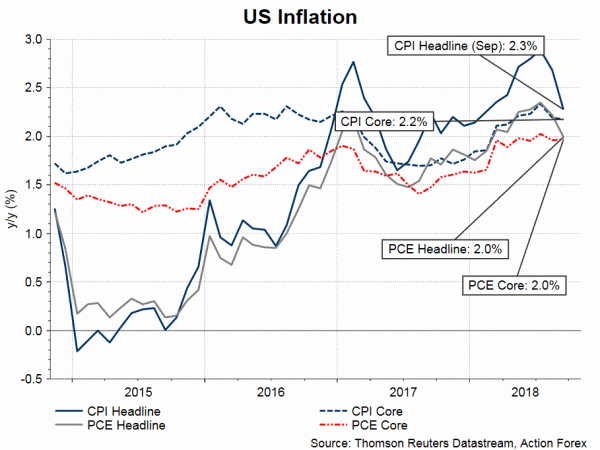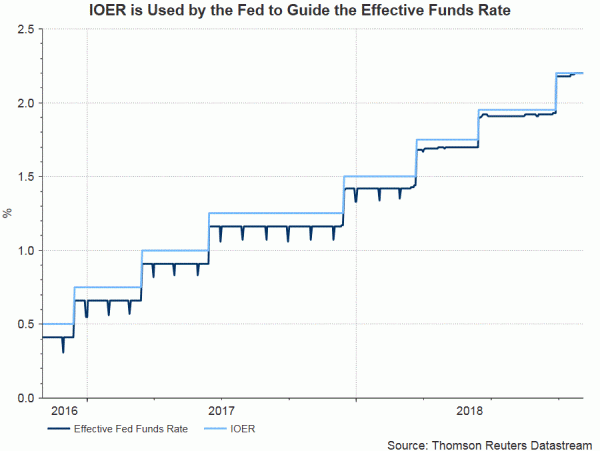The aim of the FOMC meeting later this week is to prepare the market for a December rate hike. While the recent stock market crash and slowdown in inflation have trimmed bet for a December rate hike to 77.5% from 80% a month ago, the macroeconomic environment is still supportive for such a move. We expect Fed to affirm that the domestic economy remains strong. As such, the case for a December hike, as well as three hikes in 2019 (as suggested by the September median dot plot), remain intact.
Macroeconomic Developments
The first estimate of 3Q18 GDP growth moderated to an annualized +3.5% from +4.2% in 2Q18. Consumer spending, the biggest component of GDP, jumped +2.7% in the third quarter, accelerating from +2.6%. Business investment and net trade were the key drags of growth.
The job market remained strong in October. Non-farm payrolls increased +250K, beating consensus of a +190K addition. The unemployment rate steadied at record low of 3.7%. Average hourly earnings for private workers jumped +3.1% y/y, the fastest pace since 2009. Acceleration in real wage growth signaled a boost in consumers’ purchasing power. This should eventually be reflected in the price index, causing inflation to pick up again.
Headline inflation continued to moderate in September. Yet, the Fed’s +2% target remained intact in all key measures. Headline CPI moderated to +2.3% while PCE slipped to +2%. Core CPI and PCE were at +2.2% and +2% respectively.
The sentiment indices were mixed. ISM manufacturing index plunged -2.1 points to 57.7 in October. Meanwhile, the University of Michigan consumer confidence index was revised lower to 98.6 in October from the preliminary reading of 99. Yet, the index for consumer expectations climbed +0.2 point higher to 89.1.
IOER
This week’s meeting would bring no change to the Fed funds rate, which has been staying at 2-2.25% since the increase in September. There is, however, chance that the committee would raise the interest rate on excess reserve (IOER). The chance is not high, though.
The effective funds rate, currently at 2.2%, has been trading about the midpoint of the target range since September 27. This might trigger the Fed to lower the IOER, a rate to guide the funds rate. Back in May, the Fed noted in the minutes that it might lower the IOER by -5 bps at a meeting in which the Committee left the policy rate.
At that time, the Fed funds rate was set at 1.5-1.75%, where the mid-point was at 1.625%. The effective funds rate has been trading at 1.7%, +7.5 bps above the mid-point. Yet, what the Fed eventually did was to increase to IOER by +20 bps, accompanying with a +25 bps Fed funds rate hike, June. We expect it to do the same in December, i.e.: raising the IOER by +20 bps, while hiking the policy rate by +25 bps.
















